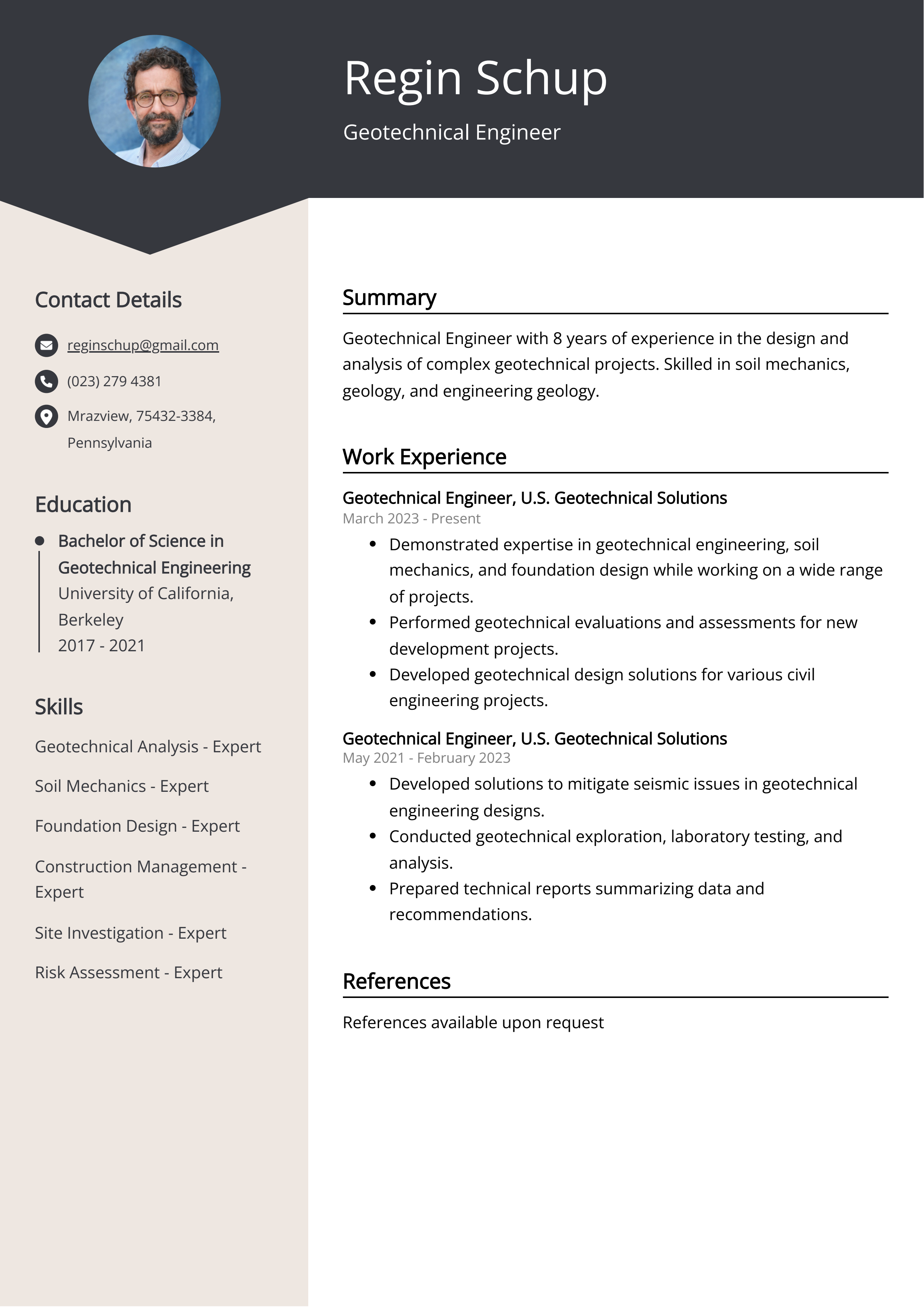The Basic Principles Of Geotheta
The Basic Principles Of Geotheta
Blog Article
Geotheta for Dummies
Table of ContentsGet This Report about GeothetaThe 4-Minute Rule for GeothetaA Biased View of GeothetaGet This Report about GeothetaGeotheta - An Overview

They carry out website examinations, gather examples, carry out research laboratory examinations, and evaluate data to assess the viability of the ground for building tasks - Geotechnical Engineers. Based upon their searchings for, geotechnical engineers supply referrals for foundation design, slope stability, preserving structures, and mitigation of geotechnical risks. They collaborate with other experts, such as engineers, architectural designers, and construction teams, to make sure that geotechnical factors to consider are incorporated into the general task layout and execution
By assessing the behavior and residential or commercial properties of soil and rock, they can determine possible geotechnical threats such as landslides, dirt negotiation, or slope instability. Their expertise helps protect against failings or crashes that can jeopardize lives and residential property. Right here are some in-depth tasks and obligations of a geotechnical engineer: Site Investigation: Geotechnical engineers conduct site examinations to collect information on subsurface problems.
They analyze the data to comprehend the buildings and actions of the soil and rock, including their strength, permeability, compaction attributes, and groundwater problems. Geotechnical Evaluation and Layout: Geotechnical designers analyze the data gathered during site examinations to examine the security and viability of the site for building projects. They perform geotechnical estimations and modeling to review aspects such as bearing capacity, settlement, incline stability, lateral planet pressures, and groundwater circulation.
Not known Facts About Geotheta
Structure Style: Geotechnical engineers play a crucial role in designing structures that can safely sustain the designated structure. They analyze the soil conditions and load demands to figure out the suitable structure type, such as shallow foundations (e.g., footings), deep foundations (e.g (http://peterjackson.mee.nu/do_you_ever_have_a_dream#c2153)., stacks), or specialized techniques like dirt improvement. They take into consideration aspects such as settlement limits, birthing ability, and soil-structure communication to create optimum foundation styles
They review construction strategies, screen site tasks, and perform field examinations to validate that the style suggestions are followed. If unforeseen geotechnical concerns emerge, they examine the circumstance and provide recommendations for removal or modifications to the design. Risk Analysis and Mitigation: Geotechnical engineers analyze geotechnical dangers and risks associated with the task website, such as landslides, liquefaction, or dirt erosion.

Collaboration and Interaction: Geotechnical designers function closely with other experts included in a job, such as engineers, architectural engineers, and building and construction groups. Effective interaction and cooperation are important to incorporate geotechnical considerations right into the general project layout and building process. Geotechnical designers supply technical experience, response queries, and make sure that geotechnical requirements are fulfilled.
The Best Strategy To Use For Geotheta
Below are some kinds of geotechnical engineers: Foundation Designer: Structure designers focus on developing and analyzing structures for frameworks. They evaluate the dirt conditions, load demands, and site features to identify one of the most suitable foundation kind and design, such as shallow structures, deep foundations, or specialized strategies like stack structures.
They assess the aspects influencing slope security, such as dirt buildings, groundwater conditions, and slope geometry, and develop methods to avoid slope failures and reduce dangers. Quake Designer: Quake designers specialize in evaluating and making structures to endure seismic forces. They evaluate the seismic risk of a site, examine dirt liquefaction possibility, and establish seismic design criteria to ensure the safety and resilience of structures during quakes.
They execute area screening, gather examples, and analyze the accumulated you could check here data to define the dirt residential properties, geologic developments, and groundwater problems at a website. Geotechnical Instrumentation Engineer: Geotechnical instrumentation designers concentrate on monitoring and measuring the behavior of soil, rock, and structures. They install and keep instrumentation systems that keep track of elements such as soil settlement, groundwater degrees, slope activities, and structural variations to analyze performance and give very early warnings of prospective issues.
Indicators on Geotheta You Should Know
They perform tests such as triaxial examinations, consolidation tests, straight shear tests, and permeability tests to gather data for geotechnical analysis and layout. Geosynthetics Designer: Geosynthetics engineers focus on the layout and application of geosynthetic products, such as geotextiles, geogrids, and geomembranes. They utilize these products to enhance dirt security, enhance slopes, supply water drainage solutions, and control erosion.
They tend to be investigative individuals, which indicates they're intellectual, reflective, and investigative. They are curious, methodical, logical, logical, and logical. Some of them are also social, indicating they're kind, charitable, cooperative, person, caring, useful, empathetic, tactful, and friendly - Geotechnical Engineers.
In the office atmosphere, geotechnical engineers make use of specialized software tools to perform calculations, develop styles, and examine data. They prepare records, review job specs, interact with clients and team members, and coordinate task tasks. The office setup provides a conducive atmosphere for study, evaluation, and collaboration with various other experts associated with the task.
An Unbiased View of Geotheta
They regularly go to project websites to carry out site investigations, analyze geotechnical conditions, and gather data for evaluation. These sees involve traveling to various places, often in remote or challenging surfaces. Geotechnical designers may do soil tasting, conduct tests, and screen building and construction activities to guarantee that the geotechnical facets of the project are being applied appropriately.
Geotechnical engineers additionally function in specialized geotechnical laboratories. In these facilities, they perform experiments, perform examinations on dirt and rock examples, and examine the engineering residential or commercial properties of the materials. Geotechnical lab designers function thoroughly in these atmospheres, handling testing equipment, running instruments, and taping information. They team up with other laboratory personnel to make certain exact and reputable screening outcomes.
Report this page